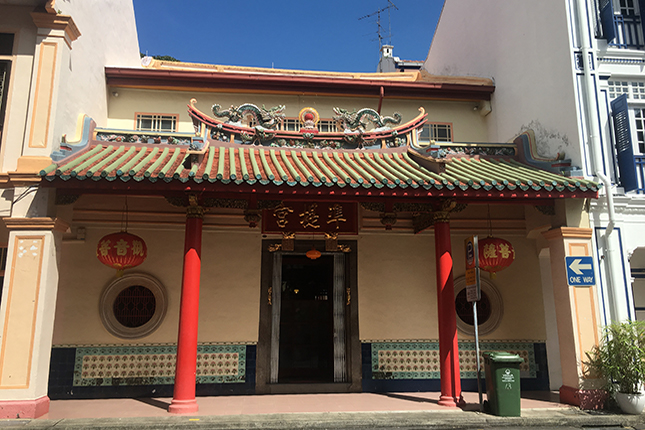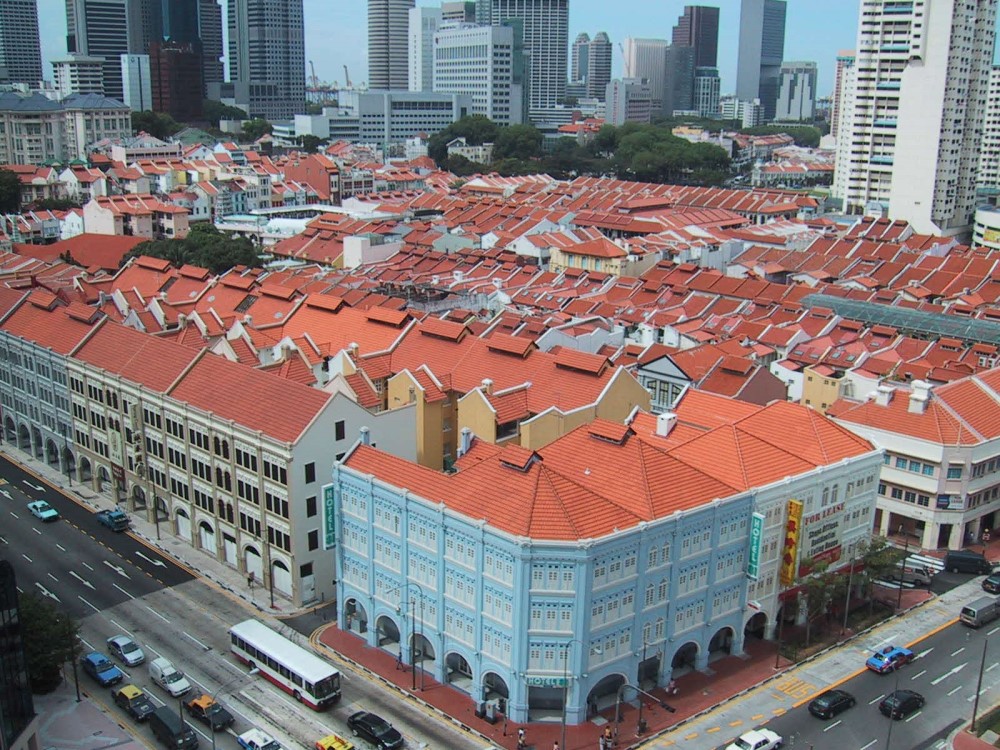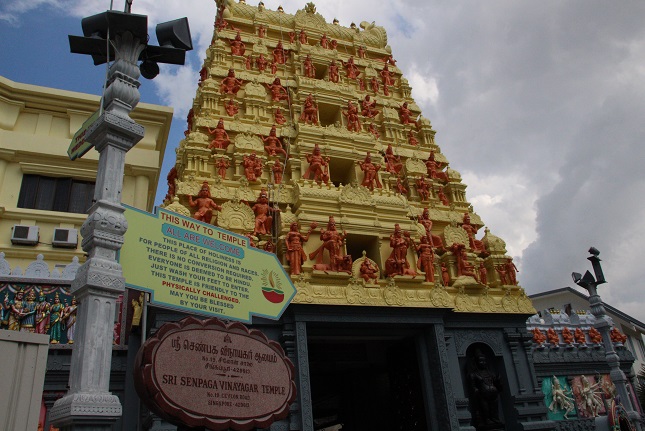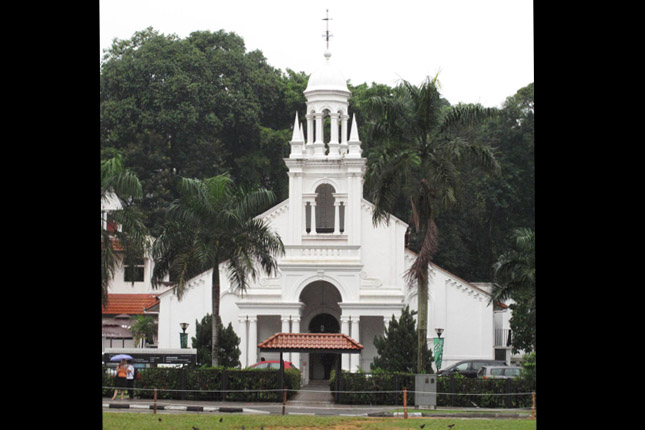Constructed in 1928 and nestled between large shophouses, this quaint temple was dedicated to the 18-armed Bodhisattva Cundhi, a popular figure within the Mahayana Buddhist tradition, and is affiliated with the Kwan Im Thong Hood Cho Temple in Waterloo Street. It was originally a branch of a now-defunct Guanyin Temple in Upper Chin Chew Street and became the main temple after the Guanyin Temple was deconsecrated. Additionally, according to a temple plaque, one of its biggest donors was the Jin Hua Temple, a Cantonese temple dedicated to Madam Jin Hua.
This temple was built in the Nanyang style and incorporates Hokkien and shophouse architecture. It has cut porcelain dragons, phoenixes, birds and flowers adorning its roof along with elaborate wooden carvings and Chinese paintings on the roof’s underside. The temple’s façade also has floral tiles made by Belgian manufacturer Gilliot & Cie. Add to that the elaborately made temple pillars and you have an architectural treasure trove that uniquely blends Chinese and Western architectural design sensibilities.
The Cundhi Gong temple played a major role in the lives of Singapore’s Cantonese majie (妈姐). They were women who had sworn vows of celibacy and worked as domestic workers between the 1930s and 1970s. The temple functioned as the place where these women made their vows. This explains the temple’s elevated status among the majie.
In 1989, the Cundhi Gong temple was designated to be a conserved building and is part of the Chinatown-Bukit Pasoh Conservation Area.
Buildings and sites featured on Roots.SG are part of our efforts to raise awareness of our heritage; a listing on Roots.SG does not imply any form of preservation or conservation status, unless it is mentioned in the article. The information in this article is valid as of September 2019 and is not intended to be an exhaustive history of the site/building.














